Sensuous Sculptures à Paris
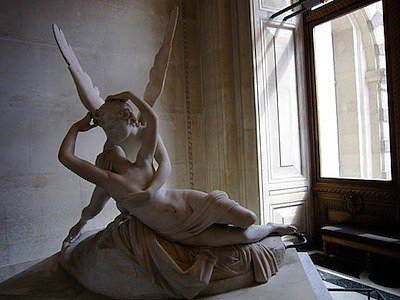
Mon 25 Oct 2010
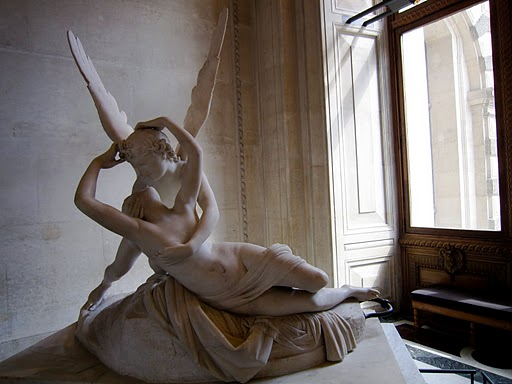
Psyché ranimée par le baiser de l’Amour, by Antonio Canova, at the Louvre.
From intimate tables at every nearby café to the nightly spectacle of the glittering Eiffel Tower, Paris has no shortage of romantic things to do and see. But if you’re just visiting the City of Light for a short time and want to make sure you take in a lot of famous, fabulous art as well, never fear. Some of the sexiest and most intellectually stimulating three-dimensional art is right under your nose. Whether you’re triping the city with your beloved or absorbing it all on your own, these sculptures are sure to put you in the mood for love.
Je suis belle, by Auguste Rodin
Musée Rodin

The Musée Rodin is fraught with sensuous sculptures—dark, rippling bronze flesh and pale, gentle marble seem to rise out of their rough and uneven bases. Giant hands caress each other without the burden of bodies. And the massive Gates of Hell bronze door incorporates decades of Rodin’s larger works, with bodies writhing, sinners falling, The Thinker thinking. Two of the figures featured in this door, The Crouching Woman and The Falling Man, were brought together with motion, intensity and violence in the sculpture Je suis belle (I Am Beautiful). While the famous Kiss, also at the Musée Rodin, is, of course, super-romantic, there’s nothing in its sweet composition that compares to the raw, wild sexiness of Je suis belle. The man bears the weight of the woman, lifting her high and clutching her with veined, taut hands in a piece named after a passage in the Baudelaire poem “La Beauté”:
I am beautiful, oh mortals, like a marble dream
And my breast on which each sacrifices himself in turn
Was made to inspire poets with a love
As eternal and silent as matter.
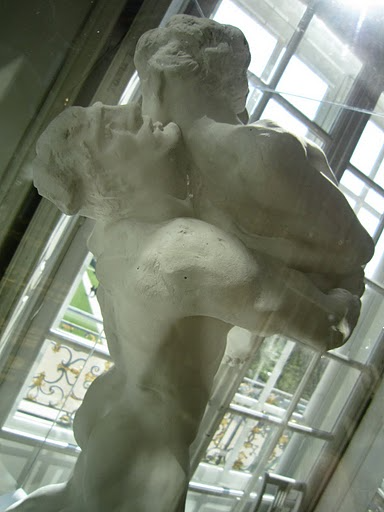
A detail of Je suis belle.
Carnal sensuality? Check. Engraved reference to one of France’s greatest poets? Check. Romance? I think this one qualifies.
Woman Bitten by a Snake, by Auguste (Jean-Baptiste) Clésinger
Musée d’Orsay
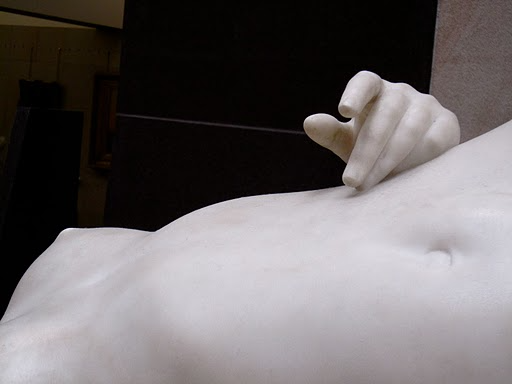
Um, symbolism anyone? A figure writhing naked on an oval base, Auguste (Jean-Baptiste) Clésinger’s mold cast from a live model created a sensation when it debuted at the 1847 Salon.
Woman Aflame, by Salvador Dalí
Espace Dalí
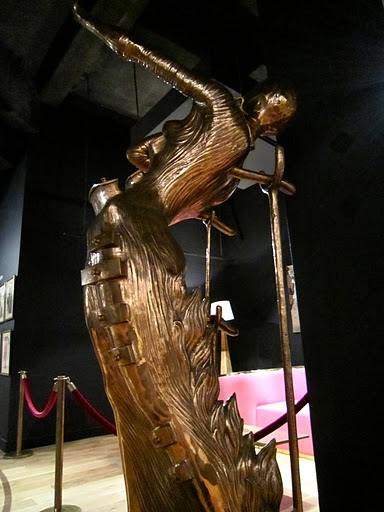
Slender and golden, flames licking from her toes up her back, Salvador Dalí’s back-bending Woman Aflame is dotted in front with drawers, said to represent a woman’s hidden sexuality. A few are subtly ajar, her secrets escaping, rising up and away with the flames, echoing her outstretched arm, her arched back.
Psyché ranimée par le baiser de l’Amour, by Antonio Canova
The Louvre
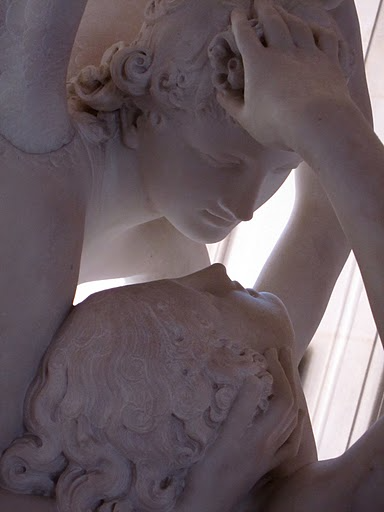
This utterly masterful composition by Antonio Canova depicts the final scene in the tale of two mythical lovers. Psyche, having married Cupid sight unseen, lets her curiosity get the best of her and sneaks in on him to peek at his beauty while he sleeps. When he wakes, he flees, saying, “Love cannot live without trust.” Alone, Psyche is doomed by Venus to perform a series of tasks beyond her mortal capabilities. She falls into a fatal sleep from which only Cupid’s kiss can wake her. This gorgeous sculpture shows that very moment, as he descends upon her in the second just before “. . . The End.”
Not only does the piece form an elegant X to frontal viewers, but a walk around its sunlit corner of the museum shows the superfine, smooth detail with which Canova crafted the masterpiece. Cupid’s wings, nearly transparent in their lightness, balance his weight as he cups Psyche’s breast and her cheek. Psyche’s fingers, raised from arms of gentle crescents, run through his tufts of marble hair as they gaze into each other’s eyes with an intimacy so rarely captured in sculpture.
After a day spent at any one of these museums, looking at bodies writhing, entangled, forever frozen in embraces of bronze or marble, you may feel the need to retreat with your honey tout de suite; or at least to grab a bottle of wine, head down to watch the sunset from the canal St.-Martin and cause a sensation of your own.